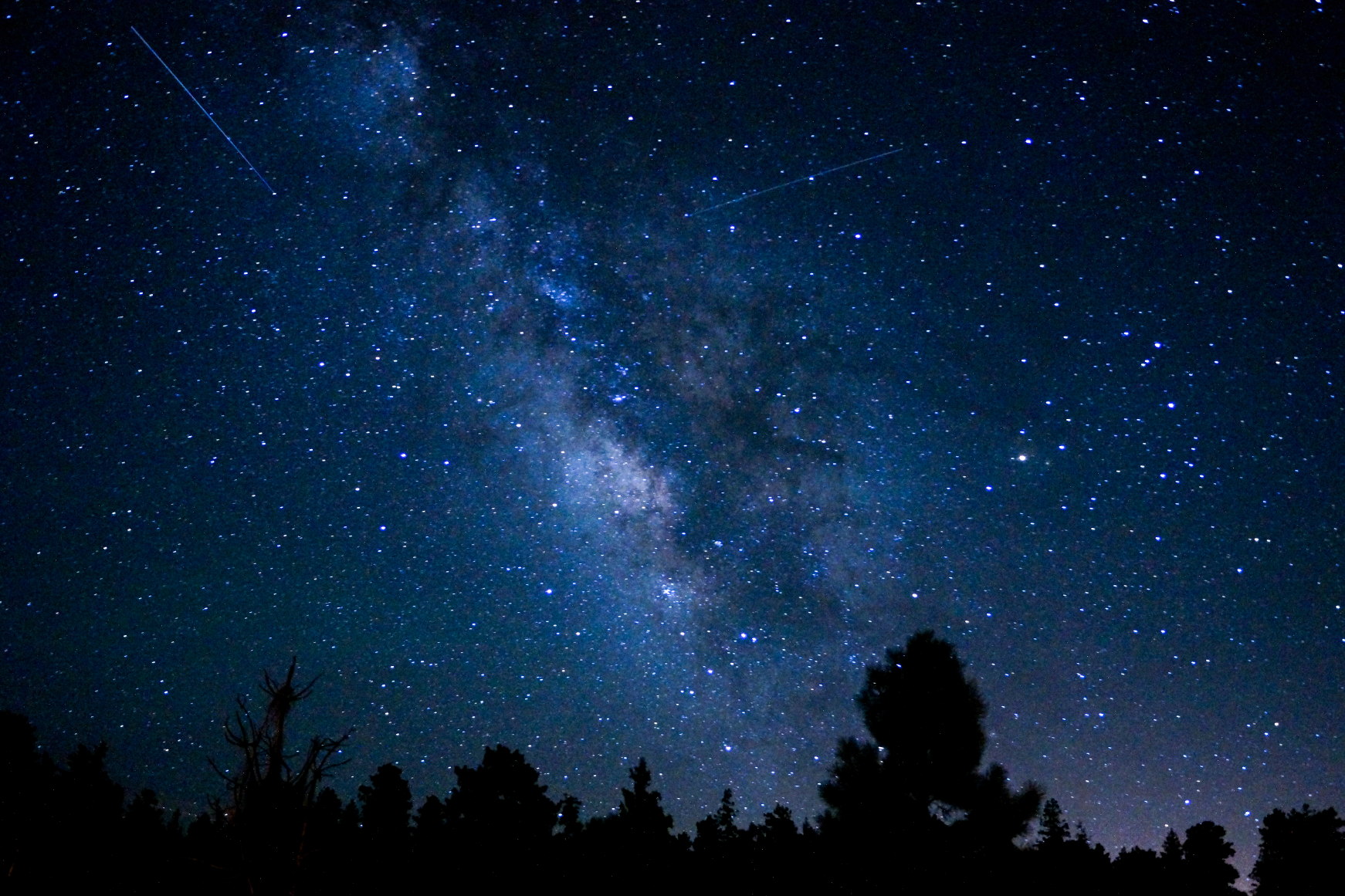August 2017 Brings Perseid Meteor Shower, and a Lunar and Total Solar Eclipse!
The 2017 Perseid meteor shower — which peaks Aug. 12 — will be sandwiched between a lunar eclipse and the much-heralded 2017 total solar eclipse, marking a month of excitement in the night (and daytime) sky.
The Perseid meteor shower is one of the most-watched showers of the year when it peaks each August; during that time, its rate can reach from 80 to 100 meteors per hour, and it's known for bright fireballs in the sky. This year, because of a bright, waning moon, visibility for observers will be closer to 40 or 50 meteors per hour — but it will still be a vivid show for viewers on the nights of Aug. 11 to 12 and Aug. 12 to 13.
"The Perseid peak is expected to occur at around 1 p.m. EDT on Aug. 12 this year, which is in the middle of the day," NASA asteroid expert Bill Cooke told Space.com in an email. "This means there will be good rates on either side. I think things may be slightly better in the pre-dawn hours of the 12th, but there should still be a decent show on either night." [How to See the Best Meteor Showers of 2017]
Before settling in for the Perseids' peak, on the evening of Aug. 7 to 8, skywatchers will be treated to this month's full moon, known as the Full Sturgeon Moon. And for lucky skywatchers in Africa, Asia and Australia, a partial lunar eclipse will be visible as well, as Earth's shadow passes over the moon.
That event happens when the moon has set over the United States, but don't worry; lunar and solar eclipses come in pairs, and the following total solar eclipse, on Aug. 21, is set to cross the continental United States coast to coast. Read our 2017 total solar eclipse guide to prepare for it and learn what the eclipse will look like in your area.
Breaking space news, the latest updates on rocket launches, skywatching events and more!
Eclipses are reminders that the Earth and moon are constantly in motion; meteor showers further show that Earth is not moving around the sun in isolation. The Perseid meteor shower occurs every year as Earth passes through the trail of dust and debris left behind by Comet Swift-Tuttle, which orbits the sun in a much more oblong path than Earth's. The comet last passed by Earth in 1992 and will swing by again in 2126.
The meteor shower's intensity is determined by the thickness of the stream on a given year — last year, for instance, the meteor shower was in "outburst," and so there were a higher rate of meteors than usual. Researchers have only had the computer power to predict Perseid outbursts since the 1990s.
Even with the moon dampening the proceedings, the Perseids should still be an impressive show, according to Cooke.
"The good news is that the Perseids are rich in fireballs; otherwise, the moon would really mess with them," Cooke said. [Perseid Meteor Shower 2017: When, Where & How to See It]
The Perseids appear to radiate from the constellation Perseus, and they are best seen from the Northern Hemisphere, although they can also be seen down into the midsouthern latitudes. They should be visible after about 10 p.m. local time Aug. 11, and they will increase in frequency all the way to dawn. Then, the next night, the Perseids rates will slowly decrease.
Remember, though they appear to radiate from one spot, the Perseids can appear all over the sky; to see them, lean back and look upward, and make sure you give yourself time to adjust to the dark. The naked eye is a better choice than a telescope or binoculars for viewing them, because the more of the sky you can see at once, the more likely it is you'll see the meteors and fireballs streak by. Ideally, Cooke said, you should devote a few hours at least to get the most out of the Perseids' peak — just don't fall asleep!
Editor's Note: This article was corrected to reflect that the moon will be waning, not waxing. However, it will still be bright enough to interfere with observations.
Email Sarah Lewin at slewin@space.com or follow her @SarahExplains. Follow us @Spacedotcom, Facebook and Google+. Original article on Space.com.

Sarah Lewin started writing for Space.com in June of 2015 as a Staff Writer and became Associate Editor in 2019 . Her work has been featured by Scientific American, IEEE Spectrum, Quanta Magazine, Wired, The Scientist, Science Friday and WGBH's Inside NOVA. Sarah has an MA from NYU's Science, Health and Environmental Reporting Program and an AB in mathematics from Brown University. When not writing, reading or thinking about space, Sarah enjoys musical theatre and mathematical papercraft. She is currently Assistant News Editor at Scientific American. You can follow her on Twitter @SarahExplains.



